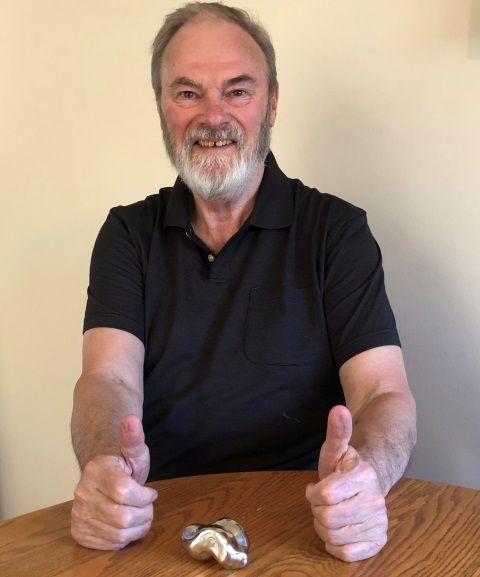By Ann Gibbon
In June 2017, White Rock, British Columbia resident John Jefferson and his wife Shannon were in eastern Washington State, doing what they loved – riding their motorcycles, enjoying the wind and the open road.
Then in one quick moment, his life changed and a health nightmare began.
A deer abruptly jumped into his path. Jefferson, 71, struck it and hit a guardrail. A key bone in his ankle, the talus, burst right out of his right foot – it was “extruded,” he says. Wife Shannon had the presence of mind to grab the bone in the hopes it could be reinserted, her husband was airlifted to a Seattle hospital and doctors there surgically put it back into place.
But back in White Rock, the wound got severely infected and he required regular intravenous antibiotics.
Things improved somewhat, but then by spring 2018, the ankle got so bad that doctors were considering amputating his foot. Last August, his dead talus bone was removed.
Jefferson refused to even consider an amputation, vowing to find a way to walk again. Instead he began researching 3D talus bone replacement. He found that Duke University was using technology to make 3D-printed bones. Then he found a Texas company that made the bone but the cost of getting the surgery in the US was prohibitive, about $100,000. The 3D-printed bone itself cost $12,000.
Enter Dr. Alastair Younger, a St. Paul’s Hospital orthopedic surgeon. Dr. Younger wanted to try the surgery in Canada but the cost of the replacement bone wasn’t covered by Health Canada, which deemed the surgery experimental. The two kept the pressure on, and then finally on May 24, Dr. Younger and his team conducted the first 3D-printed talus bone surgery and total ankle replacement in Western Canada. A 17-ounce cobalt-chrome talus bone now sits in John’s ankle. He also has a model of it on his living room table. (The Texas bone maker sent three sizes of bones as options).
After two years in a wheelchair, he is starting to walk again, just short distances – 100 metres or so at a time. He’s driving, too.
Dr. Younger says John’s story of perseverance is inspiring, and he’s been approached by others to get the 3D surgery. He says the benefits are endless. The 3D bone is cheaper than a prosthetic and the outcome for patients – the ability to walk again – is priceless.
Ann Gibbon is a Senior Communications Specialist at Providence Health Care in British Columbia


